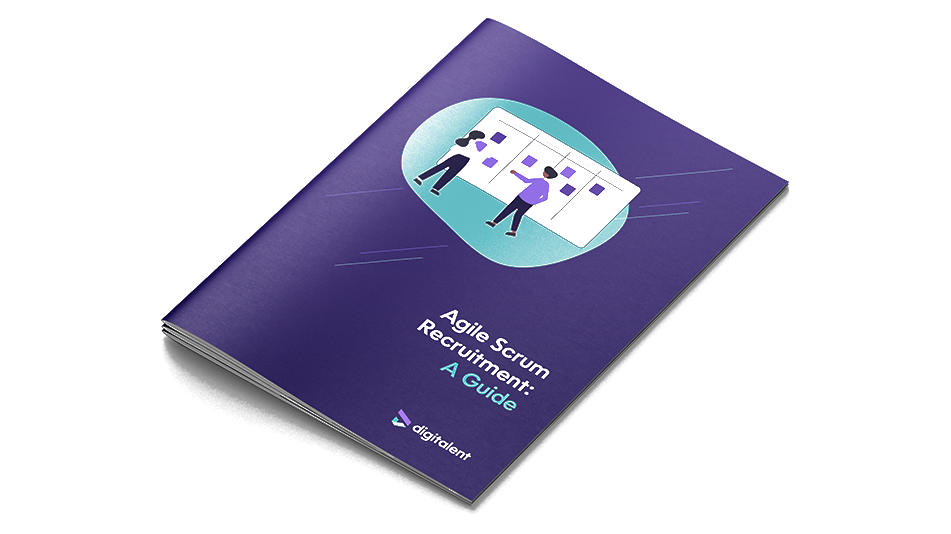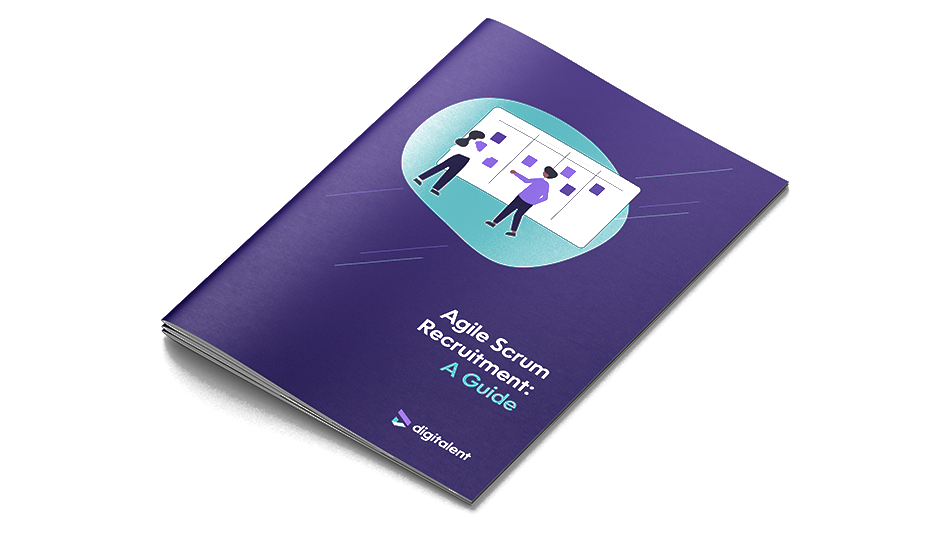
Are you struggling to find the perfect fit for your cross-functional Scrum team? Building an Agile team that functions well together can be a daunting task, but it doesn't have to be.
In this article, we’ll share five essential recruitment tips to help you build a team that will take your company to the next level. From auditing your team for gaps to understanding what your candidates are looking for, we've got you covered.
By the end of this post, you'll have a better understanding of how to build a Scrum team that will help you achieve your goals.
1. Audit your Team for Gaps
One of the first things you should do when building a cross-functional Scrum team is to audit your current team for gaps. This means looking at the skills and experience of your current team members and identifying areas where there may be a lack of knowledge or expertise.
By identifying these gaps, you can ensure that you are recruiting for the right skills and experience to improve your team further.
When conducting an audit, it's important to consider the following:
- The skills and experience of your current team members
- The role each team member plays within the team and if they are being utilised to their full potential
- The current processes and procedures within the team and if they are effective or if there are any areas that need improvement
- The overall performance of the team and if there are any areas where the team is struggling or underperforming.
To conduct an audit, you can use a variety of methods such as employee surveys, one-on-one interviews, or team meetings. Once you have identified the gaps, you can use this information to create job descriptions and recruitment strategies that will target the specific skills and experience needed to fill those gaps. This will ensure that your recruitment efforts are targeted and effective, and you'll be able to build a cross-functional Scrum team that will help you achieve your goals.
2. Get the Right Scrum Master
The Scrum Master is an essential role within a cross-functional Scrum team and plays a critical part in the team's success. They are responsible for managing the processes, facilitating communication, and ensuring that the team is working together effectively. They act as a coach, mentor, and facilitator to help the team achieve their goals.
When recruiting for a Scrum Master, it's crucial to find the right person for the role. The ideal candidate should have a strong understanding of Scrum and Agile methodologies, as well as experience leading and facilitating teams. They should also have excellent communication and problem-solving skills and be able to adapt to changing circumstances.
It's also important to consider the personality and attitude of the candidate. A Scrum Master should be a team player, have a positive attitude, and be able to motivate and inspire others. They should be able to build trust and create a positive team dynamic.
When it comes to interviewing candidates, it's essential to ask the right questions that will give you an understanding of their skills, experience, and attitude. You can ask about their understanding of Scrum and Agile methodologies, their experience leading and facilitating teams, and their approach to problem-solving and communication.
Scrum Masters should be resilient and creative to encourage collaboration, so explore their creativity in bringing new ideas to the team, and ask about things that have worked or have not worked. Also, ask how their career developed to the point that they became a Scrum Master.
For more information on how to hire a skilled Scrum Master, check out our article on the subject. It includes tips and best practices for recruiting the right person for the role and ensuring that your cross-functional Scrum team is led by someone who will help them achieve their goals.
3. Build a Team With T-shaped Employees
When building a cross-functional Scrum team, it's essential to have employees with a broad skill set. These employees are known as T-shaped employees, and they are crucial for building a team that can handle a wide range of tasks. T-shaped employees have a broad set of skills and knowledge, but also have a deep specialisation in one area. This allows them to be versatile and work on various tasks while also being experts in their field.
When recruiting for T-shaped employees, it's important to look for candidates with a diverse set of skills and experiences. This can include experience in different industries, exposure to different technologies, or expertise in various areas of business. It's also important to look for candidates who have a passion for learning and expanding their knowledge and skills.
When it comes to the interview process, it's important to ask questions that will give you an understanding of the candidate's skills, experience, and willingness to learn. You can ask about their previous experiences, the skills they have acquired, and their approach to learning new technologies or processes. You can also discuss their character attributes because this reveals who they are as a person and will highlight all the areas of their character that a business cannot train.
4. Understand What Your Candidates are Looking For
When recruiting for a cross-functional Scrum team, it's essential to understand what your candidates are looking for in an employer. This means going beyond the basic qualifications and skills listed in the job posting and understanding what motivates them and what they value in a workplace. This can include things like a good work-life balance, opportunities for growth, and a positive company culture. By understanding what your candidates are looking for, you can tailor your recruitment process to attract the best candidates and offer them the right incentives to join your team.
One way to understand what your candidates are looking for is to ask them directly. During the interview process, ask them about their career goals and what they're looking for in the workplace. You can also conduct surveys or gather feedback from current employees to get a better understanding of what candidates are looking for. By taking the time to understand what your candidates are looking for, you can create a recruitment process that will attract the best candidates and help you build a cross-functional Scrum team that will take your company to the next level.
5. Get Your Recruitment Process Right
Having a solid recruitment process in place is crucial when building a cross-functional Scrum team. This includes creating detailed job descriptions, placing ads in the right places, and having a streamlined interview process that allows candidates to move quickly through the process. By getting your recruitment process right, you can ensure that you are attracting the right candidates for your team.
Creating detailed job descriptions is the first step in getting your recruitment process right. These descriptions should include a clear overview of the role and responsibilities within the Scrum team, the required skills and qualifications, and the company culture and values. Having a detailed job description will help attract the right candidates and ensure that they are a good fit for the team.
Placing ads in the right places is also crucial. This means advertising on job boards and social media platforms that are specific to your industry. Additionally, you should also reach out to professional organisations and universities to find suitable candidates. By advertising in the right places, you'll be able to reach a larger pool of potential candidates and increase your chances of finding the right person for the role.
Having a structured interview process is also important. This includes creating a list of standard questions that will be asked to all candidates. This ensures that you are treating all candidates fairly and objectively. It's also essential to have a clear understanding of the candidate's qualifications and skills, as well as their attitude and cultural fit. This can be done by conducting multiple rounds of interviews with different team members, as well as conducting background checks and references.
Scrum Master is a people-based role, so also use the interview as an opportunity to assess how your new Scrum Master will complement your current team.
By getting your recruitment process right, you can ensure that you are attracting the right candidates for your team and increase the chances of building a cross-functional Scrum team that will help you achieve your goals.
You can also enlist the help of a specialist recruiter to help support the process and ensure you’re able to attract the right talent.
Bonus: Get Expert Help
Recruiting for a cross-functional Scrum team can be a daunting task, but it doesn't have to be. By following the tips outlined in this post, you can improve your recruitment process and build a team that will help you achieve your goals. However, if you're still feeling overwhelmed, don't hesitate to reach out to experts in the field. They can provide guidance and support to help you navigate the recruitment process and build the best possible team for your company.
To recap, we've covered the importance of auditing your team for gaps, finding the right Scrum Master, building a team with T-shaped employees, getting your recruitment process right, and understanding what your candidates are looking for. By implementing these tips, you'll be well on your way to building a cross-functional Scrum team that will take your company to the next level.
As a next step, contact us for more information.

/Digitalent-CTA%20(1).jpg?width=700&height=250&name=Digitalent-CTA%20(1).jpg)

